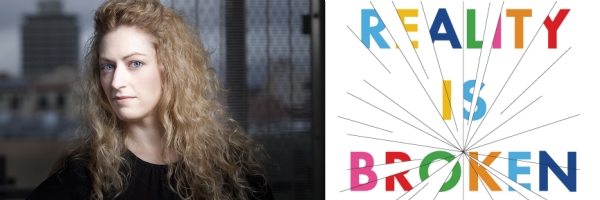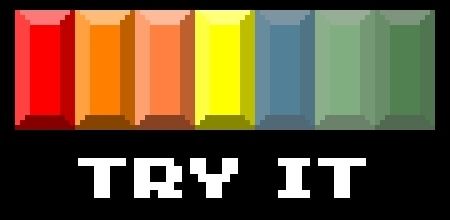
“Those violent games will turn you into a serial killer.”
“You’re wasting your life playing that game.”
“Wouldn’t you rather go outside?”
We’ve all heard the complaints about what video games are doing to a generation of young people. Thankfully, as we move further away from the creation of the modern video game, more people who have grown up with games realize these complaints are hogwash. But what if playing games could actually make gamers better people, and even change the world, while we’re at it? That’s the premise behind Jane McGonigal’s first book, Reality is Broken: Why Games Make Us Better and How They Can Change the World. Is reality broken? Do games make us better? Can they change the world? Even after reading Reality is Broken, I’m not sure.
Author: Jane McGonigal
Publisher: Penguin Press
Release Date: January 20, 2011
The author is introduced in the front flap of her new book as “Visionary Game Desinger Jane McGonigal.” Yet her name is rarely mentioned alongside the likes of Shigeru Miyamoto, Hideo Kojima, Will Wright and other virtuoso game auteurs. This is because McGonigal focuses her development talents on alternate reality games (ARGs) and is best known for her work on the Halo 2 promotional game I Love Bees.
Like all people passionate about video games, McGonigal makes a good case for the benefits of gaming. She highlights the drive that gamers have to be the best (and the practice they’re willing to put in to achieve that goal). She talks about the cooperative nature of the world’s best games and how that has translated into mass-collaboration projects like Wikipedia. She even shows that adding the trappings of games to real life can make even mundane tasks like cleaning the tub more engaging.
It is these benefits that she believes can “fix” reality. All told, the book is divided into fourteen chapters (one for each “fix”) that range from “Tackle unnecessary obstacles” (because gaming is an unnecessary part of any gamer’s life) to “Have more fun with strangers” (because everything is better in a group) to thinking about the future with “Massively multiplayer foresight.”
These fixes would probably make your life a lot better, but many of them have only a tenuous connection to games and, like a lot of game writers, McGonigal buys into the belief that video games are fundamentally different from other types of leisure activities. She believes that the amount of games played today will soon change the world (citing a study that shows the average 21-year old has spent 10,000 hours of his/her life gaming), while ignoring the fact that those hours were previously filled by other hobbies… hobbies that took up just as much time and didn’t “change the world.” She never convinces me to believe that games – and their effect on the world – are different.
McGonigal’s beliefs permeate the book and Reality is Broken treats gaming as a very monolithic thing, even though the wide variety of gamers (and the games they play) is one of the hobby’s major attractions. For example, in a chapter on feeling productive after a gaming session, McGonigal spends a dozen pages on World of Warcraft, a scant two on playing casual games during the workday and none on Xbox 360 Achievements/PS3 Trophies. As a gamer with no direct experience with WoW (and a mild obsession with my Xbox 360 Gamerscore), I felt a little left out. WoW is popular, but it’s not the universal thing that so many of its most ardent supporters tout. And McGonigal goes back to the WoW well multiple times throughout the book.
This is even more jarring when you realize that the Wii, a true phenomenon when it comes to bringing games to the masses, is barely mentioned in Reality is Broken. In a chapter entitled “Leveling Up in Life,” McGonigal uses the game-like exercise tracker Nike+ to talk about how gaming and exercise can be combined to stick to a workout routine and improve your overall health. Wii Fit is mentioned in passing as “[another] home fitness game.”
The book does hit on a few interesting ideas, including the concept of “fun failure” and the rise of social network gaming hits like FarmVille and Lexulous. “Fun failure” is something I never gave much thought to before, but McGonigal is right; even though I failed at Super Mario Bros. hundreds of times, I still went back for more because I liked the experience. Life should be like that. And anyone who uses Facebook can see how the rise of social games are bringing people together. Perhaps I have problems thinking big, but these concrete examples of how gaming is beneficial caused me to think about games and their place in society much more than the more abstract concepts found in the second and third parts of the book.
It was in these sections of the book that McGonigal turns to her speciality with a heavy focus on alternate reality games. This is understandable, as McGonigal’s day job is that of an ARG developer. McGonigal’s passion for ARGs (and their life-changing abilities) is evident, but the games she describes seem to be little more than scavenger hunts with a PC interface (The Lost Ring, an Olympic-themed ARG) or thought exercises where moderators give points for good ideas (World Without Oil, Superstruct).
Other ARGs are mentioned throughout the book, including the excellent Chore Wars and the aforementioned Nike+. There’s also an ARG McGonigal created to cope with healing from a concussion, SuperBetter, as well as a game-based learning system, Quest to Learn, which replaces traditional grades with “leveling up.”
McGonigal herself admits that few people even know what ARGs are, so perhaps the ARG-makers are still working out all the kinks in developing a project that blends gaming and the real world. And few are playing them as most of the ARGs listed had playerbases numbering only in the thousands. Most of these games just seem to bolt a score component onto an activity that has existed for a long time. But again, maybe I just can’t think big enough.
So is reality broken and can games change the world? Probably not. The first part of Reality is Broken is an excellent summation of why we play games and why they’re good for us. But the remaining sections peter out by examining real world activities that are only considered “games” because their creators say they are. And their world-changing abilities are likely a bit overstated.
After playing games for 25 years, I think I’ve realized it’s OK if all my games do is entertain.

Review Disclosure: A review copy of Reality is Broken was provided by Penguin Press for the purposes of this review.






